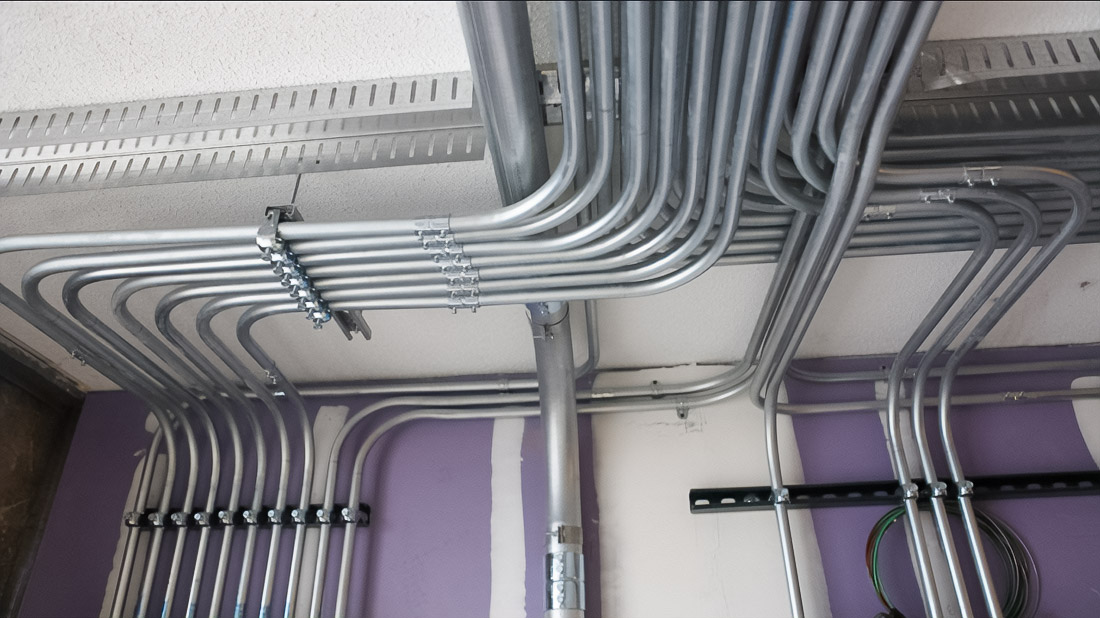In conditions of industrial usage in the UAE, the choice of optimal material for cable trays is extremely important. These structures are essential for shielding cable networks from damaging elements. Reliability and durability in the UAE’s hot climate, where temperatures can rise to 50 degrees Celsius and more, depend on the material selection. Three primary materials—galvanized steel, stainless steel, and aluminum—will be covered in the provided text, along with their characteristics, environmental factors, industry standards, and effective applications. For example, Bonngulf provides a wide choice of cable trays that can satisfy all these requirements.
Creative study materials for cable trays in conditions extreme

Creative review materials
- Galvanized steel: This steel material is coated zinc for protection from corrosion. Barrier coating protects the base from moisture and oxidation, and its low cost makes this material popular in the construction industry. For example, such steel is often chosen for urban project lighting.
- Stainless steel: High resistance to corrosion provided chromium, forming a protective oxide layer. Material famous for durability and aesthetics, therefore it often applies, for example, in UAE on petrochemical plants, where aggressive environments can destroy other metals in a few years.
- Aluminum: light metal with a natural oxide layer, protecting from corrosion. Its lightness and high heat dissipation are valued in aviation and transport industries, where reduction of weight and preservation of structural integrity are extremely important.
Comparison main properties
Strength and resistance to loads
- Galvanized steel: withstands significant loads, but its weight can be a problem. For example, during the construction of high-rise buildings, additional mass can require a reinforcement frame.
- Stainless steel: provides the highest resistance to loads among all considered materials and is ideally suitable for complex conditions, for example, in construction bridges across salty lagoons.
- Aluminum: demonstrates sufficient strength for many applications. In urban conditions, where the load usually does not exceed permissible limits, this is the ideal choice.
Durability and service life
- Galvanized steel: Over time, the zinc coating can wear out, especially in conditions of marine breezes. In areas with limited budget construction, exactly this material can be economically justified.
- Stainless steel: best durability, especially in chemically aggressive environments. For example, pipelines in oil refining installations in the UAE are often manufactured exactly from this material.
- Aluminum: suitable for long-term operation subject to compliance requirements on weight and corrosion. It was chosen for projects on the southern coast, where marine air can complicate life steel.
Corrosion resistance in harsh climate UAE
- Galvanized steel: galvanization can yield in conditions of high humidity and salty fog, characteristic of coastal regions of the country.
- Stainless steel: virtually unchanged by corrosion in an environment with aggressive conditions, such as sandstorms or chemical emissions.
- Aluminum: Aluminum and its alloys demonstrate high resistance in the same conditions, making it a suitable choice for cloudiness spots and corrosion along the Arabian Gulf.
Cost and economic efficiency
- Galvanized steel: is the most budget option, ideal when building infrastructure with tight deadlines.
- Stainless steel: high cost justified by long-term stability and absence of necessity in frequent repair, especially in the chemical industry.
- Aluminum: price varies, but thanks to its properties, it can reduce operational expenses, which favorably recommended itself in the aviation industry UAE.
Conditions climate and operational challenges in UAE
Sandstorms, excessive humidity, and extremely hot temperatures (up to 56°C) have a big impact on sustainable materials. High heat conductivity and resistance to corrosion and abrasive impact are requirements for materials. Aluminium trays, for instance, have been successfully used in regional telecommunications locations, which accounts for their affordability and robustness.
Standards and regulatory requirements in UAE
The UAE established strict building codes and standards, which take into account the climatic features of the region and provide compliance requirements for strength and safety. These norms are especially important when building government facilities, such as airports and subways. Materials must not only meet technical characteristics but also sanctioned standards to guarantee durability and reliability. More about engineering standards.
Successful cases and examples application
many examples of successful application of various materials in UAE. In the oil and gas industry, stainless steel is used due to its durability and corrosion resistance. For urban infrastructure, galvanized steel is often chosen due to its cost-effectiveness. Aluminum also finds wide application, especially in conditions where critical reduction weight, for example, in the aircraft construction and transport sector. Learn more about practical examples.
Thus, the choice of material for cable trays in UAE must take into account many factors: properties materials, climatic and regulatory requirements, economic aspects, and successful examples from practice to ensure the reliability and durability of infrastructure.

Skydiver, vegan, audiophile, Saul Bass fan and screen printer. Producing at the sweet spot between simplicity and computer science to create not just a logo, but a feeling. Let’s chat.
